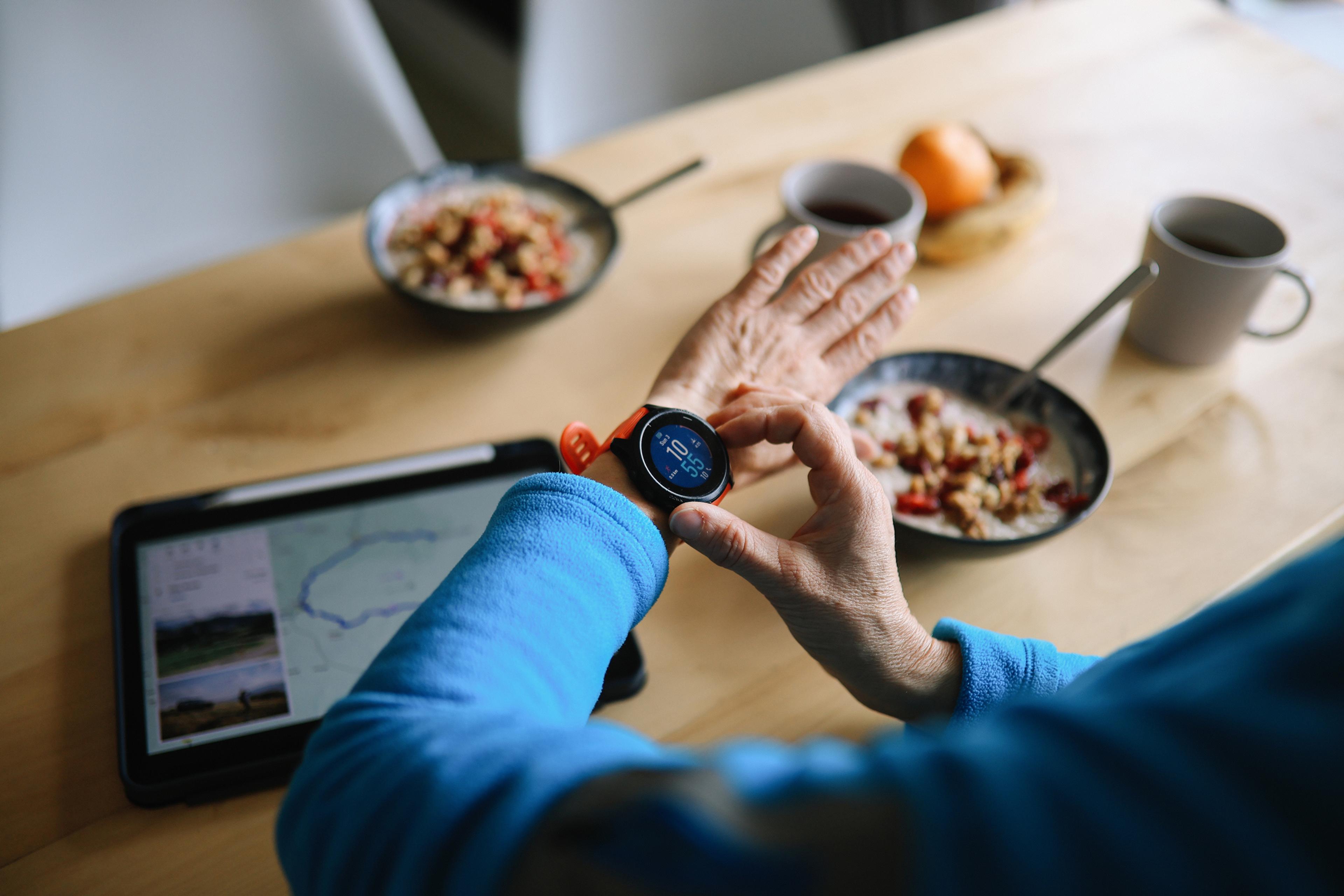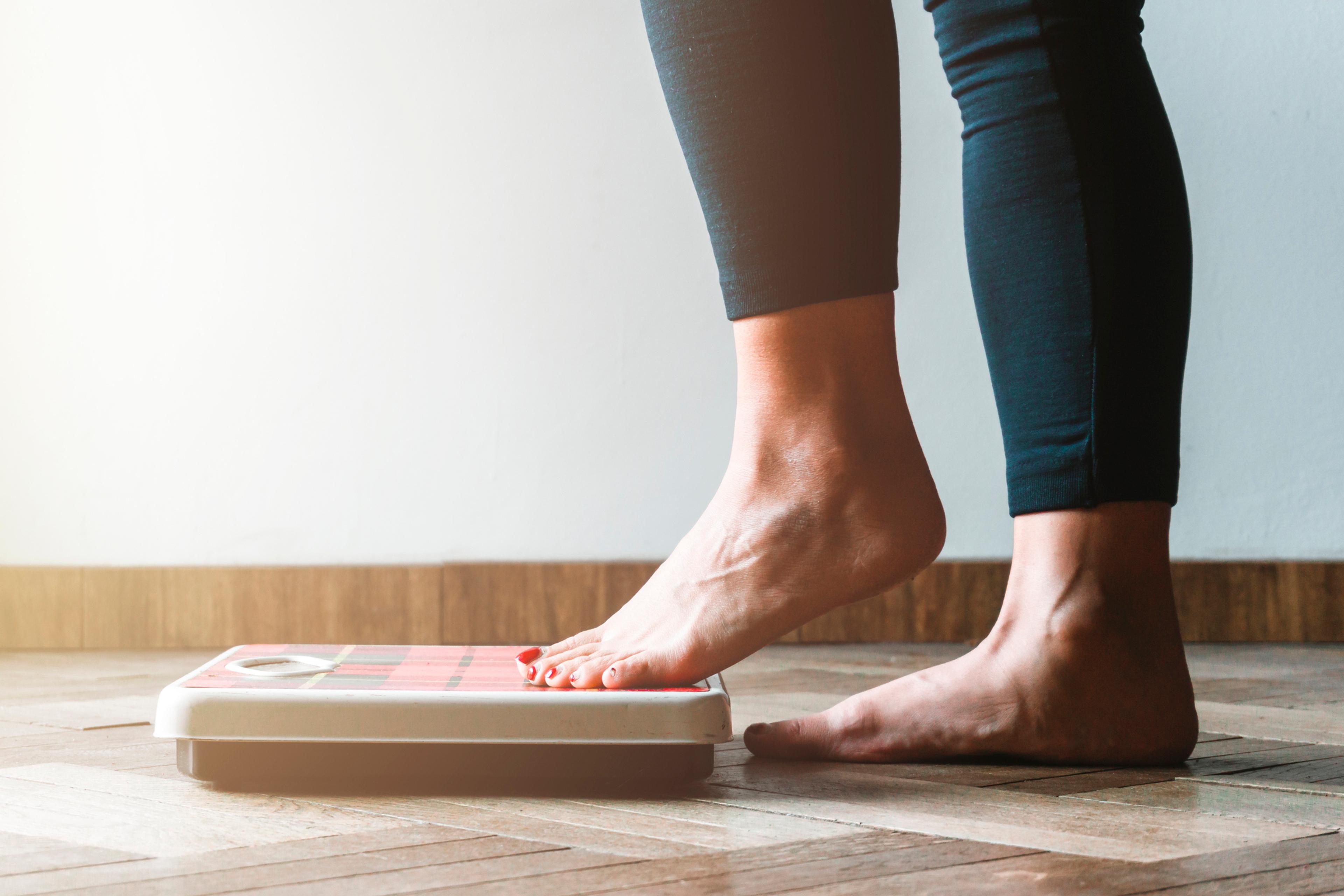Chuck Gaidica: This is A Healthier Michigan Podcast, episode 55. Coming up, we discuss how exercise can positively affect, and impact your mental health.
Chuck Gaidica: Welcome to A Healthier Michigan Podcast, a podcast dedicated to navigating how we all can improve our health and well-being through small, healthy habits we can start implementing right now. I’m your host, Chuck Gaidica. Every other week we dive into topics that cover nutrition, fitness, wellness, a whole lot more, and on this episode we’re talking about the impact exercise has on our mental health, and with me today is the founder of a group called Still I Run – Runners For Mental Health Awareness, Sasha Wolff. Sasha, how are you?
Sasha Wolff: Good. How are you doing?
Chuck Gaidica: You know, I am doing well. It’s good to say that, I think, you know, there are a lot of people doing very well right now, and it’s nice to hear your voice. I know you’ve got a journey and a half, that we really want to get into, because the idea of Mental Health Month, there’s a month and we’re in it, in the month of May, but the idea that we even have a month that deals with depression and anxiety, and so much more, is so critically important to everybody every day of the week, but especially now as we’re coming out of the time we are, right?
Sasha Wolff: Yeah, absolutely. I mean, it’s always a good thing to be aware of mental health issues just because it’s so important. Physical health, and mental health are the same when it comes to importance here.
Chuck Gaidica: Yeah. So you, not your entire life, or at least you didn’t recognize it, but if you could take us back, what would you say, mid to late teens you start to figure out you’re living with depression and anxiety, or was it one or the other?
Sasha Wolff: It was first depression, as I got older though it turned into depression and anxiety, but I would say my journey with mental health illness was taking place in my college years, so when I was a freshman at a college here in Michigan. I finally just decided to go to the school nurse on campus, and they diagnosed me with depression, and they gave me a prescription for Prozac weekly, and no follow-ups. There was no furthering education on like, “Hey, maybe you should go to therapy. Hey, you should check in with your primary care physician regularly.” So I took Prozac weekly for about 10 years, which is a very long time to not look at your medication, and how it’s working, and eventually found myself in a really dark spot, where my depression outgrew the medication I was on. I found myself having to check into Pine Rest in Grand Rapids, Michigan for an entire week for depression, and that’s when they diagnosed me with anxiety as well. So very interesting, checking into a mental health hospital there.
Chuck Gaidica: Yeah, and you’re at what age when you’re checking into a mental health hospital?
Sasha Wolff: 27, so it was a good 10 years of just not doing anything with my mental health journey, but after staying at a hospital for a week, just started learning about being an active participant in my health, much like you would for any physical ailment, I had to be an active participant in taking care of my mental health. So it was at the hospital where I learned about healthy habits, and where I got a therapist, and where I adjusted my medication, and then began a whole new part of my journey of having a mental illness.
Chuck Gaidica: Yeah. Well, if we can go back a little bit again, back in time, I don’t want to make any assumptions about what the triggers were, or why you found yourself in depression because immediately you would say, “Well, it could have been school pressure.” It could have been because you’re a girl, and all the girls are … I didn’t know this, we have three girls, and two boys, and my wife said to me, “Oh, just wait, girls are so much worse at bullying than the guys,” and I thought, “That’s impossible.” I mean that … and then I lived it with my three daughters, and I saw it happened right before my eyes, and how it affected each one differently. But what is it that was leading you down this path to depression, or could you discern it then, or even now?
Sasha Wolff: I think for me particularly it’s a genetic thing. I think it was just exasperated by the fact that I had moved from California to Michigan to go to school. So I’m suddenly in this new surrounding with new people, no mom and dad around, and that kind of just brought the depression out more, but I say it’s a genetic thing for me in particular because it’s something that my mom deals with, my grandfather dealt with it, so it definitely runs in the family.
Chuck Gaidica: When you had depression we sometimes see it written, depression/anxiety, do they always go hand in hand? Did they go hand in hand with you, or did the anxiety come along as things went along?
Sasha Wolff: Yeah, so they do pair up a lot. A lot of people have depression and anxiety, with me, it was just depression at first, and then I think that anxiety decided to tack itself on the older I got, and the more difficult things get as you are navigating being a young adult. So that’s why when I finally went into Pine Rest, and got real help, that’s when they’re like, “Hey, you not only have depression, but you have anxiety as well.” That’s why it’s so important to be an active participant in your mental health, because I would not have known that, or been able to treat it had I not gone to a professional.
Chuck Gaidica: So before you went to Pine Rest, or only when you went to Pine Rest were you having these aha moments about behaviors, and the way you were feeling. Were they explaining things to you, and light bulbs start going off like, “Yeah, that’s me?”
Sasha Wolff: Yes, absolutely. I cannot stress that enough, going and talking to professionals about it, they were able to put words in descriptions to the things that I had been feeling for close to a decade, and that’s a really long time. So I’m so thankful to getting that professional help, for those light bulb moments, and that’s when they taught me about having healthy routines. Again, that’s when running came into my life, because that’s a good, healthy routine, and that’s something that I had done before, and it was familiar to me.
Chuck Gaidica: For other young women who may be listening, and even for parents, or brothers and sisters, I guess it doesn’t really matter, what can you share with us about the darkness? What were the things that you were experiencing that you just didn’t feel you could get a handle on somewhere between that age of 16 and 18, or a little later as you get to college? What was going on?
Sasha Wolff: Just extreme sadness, and it didn’t have anything to do with external stimulants, like things that are going on on the outside, because my life seemed pretty awesome. I mean, I was starting a brand new journey, going to college, making new friends, doing the college thing in, and there was no reason for me to be sad. So everything just felt like there was a heavy weight, and there was a black cloud always over me, and as if I was staring through a pair of sunglasses that were not giving me a correct picture of what was really happening in my life. It’s an interesting thing to try and describe.
Chuck Gaidica: Did it extend into your life to the point where you were living in the dark, literally the blinds would be drawn, or you would keep the lights off? I mean, was the darkness that you were experiencing extending itself where you could recognize it or other people could around you?
Sasha Wolff: Other people could recognize it, but when I was in that so-called Valley of Depression, I couldn’t realize it. My reality was darkness, this is my life, it is sad, it is depressing, it is nothing that I can control. It’s nothing that I can get out of, that’s just the feeling and mindset that you’re in when you’re in that Valley.
Chuck Gaidica: I had someone in my family who suffered from anxiety and depression for, maybe their entire life, and I came to recognize, as someone very close to this person, that for me, I could see it, but unlike, and I’m not diminishing this, unlike getting a broken arm, I couldn’t just snap them out of it, or shake them, or the old-fashioned cartoon, “snap out of it.” I mean, you know, but like a broken arm I could say, “Let’s get in the car, I’ll drive you to ER, and we’ll get a cast on it, and it will all be okay.” You could see it, you could fix it, somebody professional could help you immediately. This is a whole different kind of broken, and I saw that it was hard for me to try to even involve myself, because there wasn’t much I could do. I felt paralyzed myself.
Sasha Wolff: Yeah, absolutely, and I think that’s the … almost the scary thing about it is even though I had people on the outside telling me that I was depressed, I couldn’t see it. I couldn’t recognize it. I was not only blind to the world, but I was blind to what other people were seeing as well. They would tell me the truth, and I couldn’t absorb it, or believe it. It’s really hard to believe something that’s invisible, it’s not a physical broken arm. It’s not a cut on your skin. It’s in your brain, you can’t see it. It’s hard to visualize.
Chuck Gaidica: What was your low point that led you then to seeking this other professional help, not the doctor with the Prozac, but where did you get to where you finally said, “I’ve got to seek this help?”
Sasha Wolff: I was actually having a panic attack in the parking lot of Best Buy, I think it was. Luckily I was with someone at the time who recognized what a panic attack was, and this was my very first one. I couldn’t breathe very well, and my heart was racing. I couldn’t stop crying. I don’t know if it was just the straw that broke the camel’s back, but the person I was with suggested that I checked myself into Pine Rest, and I’m so glad I said yes. That’s how I ended up checking myself in for an entire week, because I finally had reached the end of the rope like, “I need to get help, this is not normal.”
Chuck Gaidica: Are panic attacks directly associated with anxiety or depression, or both?
Sasha Wolff: For some people it’s both, for me, I think it’s definitely both as well.
Chuck Gaidica: So you got this tipping point, you’re now in Pine Rest, up until this point, were you trying to involve things like exercise in your life to take the edge off, or create this way of running and doing something, or did you learn this as a technique while you were in the facility?
Sasha Wolff: Before I went to Pine Rest, I didn’t do anything. Nothing, which is so awful to say, but I think that has … that had to do with the stigma. So if I was doing something for my mental health, it was me finally, I guess, admitting that I had problems. I didn’t want to talk about those problems with anyone, so it was in Pine Rest where they taught me a different type of coping mechanism, which was find that healthy routine, and for me, that just ended up being running.
Sasha Wolff: I had a pair of running shoes at home that I had used occasionally, and I saw them one day when I got out of the hospital, and I was like, “Yeah, I guess we’ll just put these on, and go for a little walk. See how things feel.” I felt better afterwards, not incredibly better, but my mood had felt a little better, and I felt like I had accomplished something. The next day I went a little longer on my walk, and the day after that I started running, and escalated from there. I have not stopped running for my mental health since I put those two things together, healthy habit, running, and this is great for my mental health.
Chuck Gaidica: When you say running now, not at the beginning when you’re taking baby steps to get into it, what is running to you? I was like a two and a half, three mile a day guy, I never went long, but it sounds like if you founded a group called Still I Run, I’m guessing you’re running is a different thing, right?
Sasha Wolff: Running for me is life. I always say therapy and running saved my life, and it truly did. So now I do … I’m not in marathon training now, but when I am marathon training it’s like 40 miles a week. Now I’m doing 20 miles a week, but I go out most every day, and I try and sign up for as many races as I can, just because the running community is so amazing.
Chuck Gaidica: So as you analyze it, now you’re looking a bit in the rear view mirror. So of course you’ve got the benefit of this history, running can be tied to changing your diet, because now all of a sudden you’re getting holistic about your health, and your approach. We talk about it all the time on this podcast, but did you find there were either ancillary benefits that other things were improving, or could some of those things have improved, and actually given you a better state of mind because you were just changing life along with this running?
Sasha Wolff: Yeah, I guess running changed everything in my life, because when I started getting out there I found that running was a little bit easier for me if I didn’t just eat pizza and ice cream. Running became a lot easier, and I could breathe better, and felt better when I was eating, and fueling my mind, and my body with the proper things.
Chuck Gaidica: So what were the immediate benefits? We hear about people who run long distances and the runner’s high, so I know that there are all kinds of things that can be going on inside us, whether it’s hormones, the endorphins, whatever’s being released. As you’ve studied this for yourself, is that what’s taking the edge off of this, you think, or is there more going on? Is it just breathing fresh air? Is it that simple?
Sasha Wolff: It can be. I think for a lot of us it’s a few different things. One, is the chemicals when you’re running, that increases the serotonin, which makes you feel better. But the other piece, I think for those of us that run for mental health, is when you look at running, I mean, it’s not that easy. When I say I want to go for a run, people look at me like, “I can’t believe you find that fun, that’s hard to do,” and it’s true. So the fact that I can have depression and anxiety, and get out of bed every morning, and run, and do something hard, the sense of accomplishment feels so amazing. I feel like I can take on the world after I get my run done, just because I did this hard thing. So I think it’s that sense of accomplishment, the serotonin, the fresh breath of air, the community you can gain through, it’s so many things that helps with the mental health.
Chuck Gaidica: How are you actually feeling? Like as soon as you lace on your shoes you’re feeling better, and your attitude is changing, and your mental health, I mean, when does this kick in? As you’re running?
Sasha Wolff: Usually as I’m running, and it always depends on the day because if it’s really hot or really cold outside, I do not want to lace up those shoes and go outside. But as soon as you’re going, and those endorphins are flowing, and you’re listening to your podcast, or your music, and you get grooving, that’s when you start to feel better.
Chuck Gaidica: You know, what’s so encouraging to me, and I hope others as well, is that you come to realize you can’t begin to find change unless you start something, right? So in your case, it literally was going back to your place, and picking up those shoes that you were only using every once in a while, and turning it into, “Run, Forrest, run.” You started to go, and now here you are. So the encouraging thing is you did begin this somehow, all of us can say, “Well, we can start something somehow.”
Sasha Wolff: Yeah, I literally did the Couch to 5K Program because that’s where I was at. It was like couch, running my first 5K, and today, let’s see, I’ve done three marathons, and I’ll be training for Boston come September. I’ve done countless half-marathons, and a half iron man, so I started at the bottom.
Chuck Gaidica: I’ve got a son who does the other crazy ones, the run through the mud, where you’re climbing and leaping, have you done one like that, where you get completely filthy and-
Sasha Wolff: Yes, they are so much fun.
Chuck Gaidica: Yeah, what are those called? Do they have a name beyond Ironman, or marathon, or something?
Sasha Wolff: There’s a couple of them, probably the Tough Mudder or the Warrior Dash. The Tough Mudder is the one that’s got a ton of obstacles and mud in it. It’s a lot of fun.
Chuck Gaidica: I saw some of the videos actually of him, and it’s a … because he is kind of a Navy Seal type character, although he never was one, but it’s really wild to watch so I … I don’t do those. I’ll hire somebody to do one for me. So let’s talk about here we are in this month, Mental Health Month, and the awareness that comes with it, but there’s also part of this, you touched on it, but I want to go a little deeper on the stigma that is associated with mental health. Because to be fair, a lot of us who are outside that bubble that you were in, we don’t really know what to say. We don’t know how to say it. We don’t know if we’re going to say too much, and make you cry. We don’t know if we’re going to be of any help. So part of the stigma is something we don’t know what to do, but there’s more to it than that, can you explain what you experienced?
Sasha Wolff: So the stigma is super complicating, just because both, like you had said, you don’t know what to say as someone outside of the bubble, but then as someone inside of the bubble, we don’t know what to ask for. I think, now looking at this in the rear view mirror, it’s a very individual journey. I did not become comfortable with speaking about my story in public, in regards to defeating the stigma for a good 15 years. I think as someone that’s on the outside of the bubble, it’s important to realize that mental health, and physical health are the same. So if you have someone that you believe is suffering from a mental illness, I think it’s okay to reach out, and ask them how they’re feeling, and reassure them that mental health and physical health is the same. I think when we try, and place all these cushions around talking about it, that almost makes the stigma worse, if that makes sense.
Chuck Gaidica: But you know, some people may be their context is different, and it’s not just, I shouldn’t say just cause that sounds like I’m diminishing, it’s not that they’re embarrassed, although they may be, it’s just, it’s their own private beeswax, right? I mean, they may not want to talk about it either, where you have really turned into this superhero of an advocate, who develops a nonprofit called Still I Run, and that itself has got to be something that helps you work through it, right?
Sasha Wolff: Yeah, absolutely, and I think a piece of that is the community that’s now been built out of Still I Run. People that find Still I Run that have a mental health condition, they’re really getting into the community as well, and I think that helps them process their journey by looking at how other people are processing their own journeys. Because even though they are very individual and different, they all have the same underlying tones to it, so if you’re not comfortable about talking about your mental health in public, that’s fine. There are communities of people that do want to talk about it though. It’s very individual.
Chuck Gaidica: Yeah, but when you’re with these other runners who are running for mental health awareness, when you’re done, when you finish a run, or even if you were to go out with a friend, and do three miles just to do it, when runners high-five or give a hug at the end of a race or something, that’s got to be a vastly different experience for some of you, and your friends, and your tribe, as you call them, that you’re completing something that’s above and beyond the 5K.
Sasha Wolff: Yeah, absolutely. The funny thing is I think a lot more people run for their mental health than we really realize on a very public level. So when I launched Still I Run, all of a sudden I had all these people go, “Oh, my goodness, I guess I have been running for my own mental health all these years, but I didn’t really realize it.” So I think there’s a lot of closet runners who were like, “Oh ,yeah, I do this to feel better on a daily basis.”
Chuck Gaidica: Well, and your thing happens to be running, and for me it could be … well, I did a seven mile bike ride today. I’m also a private pilot. There’s actually a name within the flying community to get in a small little airplane. I mean, literally a little tiny putt-putt thing, and go up for a blue sky, mental health day. I’m just going to fly when the sky … no weather, no thunderstorms to worry about, I’m just going to go up, and escape the bounds of gravity for a minute, and just fly around, and see blue sky, and how impactful that is. So I don’t think it matters whether you’re above the ground, you’re riding a bike, you’re gardening, right? It could be whatever you feel is helping you get into this space that makes you feel better.
Sasha Wolff: Yeah. It’s not running for everyone, but everyone has something that they really enjoy. I have a friend that loves to rock climb for mental health, who would have thought? But for them, it gives them that “high,” and for others it’s yoga or swimming. It doesn’t matter what your thing is as long as you’re getting out there, and doing something that makes you happy, and it’s healthy at the same time.
Chuck Gaidica: So have you found now that Still I Run – Runners For Mental Health Awareness is developing into something broader than Michigan? Are you finding you’ve got evangelists or ambassadors around the country that are sharing their stories about running and their mental health?
Sasha Wolff: Yeah, it’s incredible. When I first launched Still I Run in 2016 I thought just family and friends would back it, and be a fan of it on Facebook, but it has expanded since then. I’ve got 20 ambassadors across the country, and we always have international applications too. I’m just unable to support international ambassadors at this point. Then every May we do a Mental Health Run Streak, where we encourage people to run or walk at least a mile every day in the month of May. We have, I think over 40 different states participating this year, and last year it was over 30. So every year it starts to increase, but it’s my hope someday that Still I Run can be a national movement, not just an organization, but a national movement so that it’s a regular thing to talk about running for mental health.
Chuck Gaidica: What are you doing now when you talk about this becoming a movement? Obviously it’s got to be taking up some of your time, but in real life, what else is going on?
Sasha Wolff: So in real life I am a mom of two kids under two, and then I also am a full-time communication specialist for Herman Miller. So Still I Run is stuff that I do on the side, and then I have an incredible army of volunteers and ambassadors that help me out with the blog posts, or setting up virtual events, or setting up events in their area, so I’m super thankful. I would love to turn Still I Run into a full-time job someday because there’s a lot to it. I believe in the power of running for mental health.
Chuck Gaidica: But you know, in this world now where virtual communities have been popping up for all kinds of reasons, professional and otherwise, just FaceTiming with our kids, and doing things. We play Yahtzee, and we did, for the past couple of weeks we were playing Yahtzee from a distance. So there’s all kinds of ways to get this community together around you, and how important that is, and impactful whether you’re going on a diet, or whether you’re to starting run, to have people that can go in this with you, and run alongside you, whether it’s physically, literally, or virtually, it’s got to be such a great thing.
Sasha Wolff: Yeah. So at first people were like, “Well, how do I get involved with still I Run? Is there a group near me?” “Well, no not right now, because we’re a small, but you can join the virtual community.” Now that everything’s virtual, people are really flocking towards Still I Run, because on our private Facebook page you can connect with someone in a completely different state and say like, “Hey, let’s go for a run together.” They’ll both go and do their runs in their separate states. They’ll come back on the group, and they’ll post about their run, and you just feel like you’re a part of a community that way, even though you’re in two different states.
Chuck Gaidica: That’s so cool. Your husband, did you know him when you were going through the beginning stages of this, or does he, I know he’s a runner too, right?
Sasha Wolff: He is definitely a runner. He’s done way more marathons than me, and he’s been running since he was 12 years old, but he got to know me right when I was starting to develop the idea for Still I Run back in 2015, 2014. So he’s kind of been there since the beginning of Still I Run.
Chuck Gaidica: His running is just because he’s a runner, and that’s it, right?
Sasha Wolff: Yeah.
Chuck Gaidica: When he runs what does that mean? Like tomorrow he’ll run how far?
Sasha Wolff: Oh, my goodness, he usually runs like five or six miles every day. He is a beast when it comes to running, and he just does it because it’s something he enjoys. He doesn’t do it for his mental health necessarily, although I imagine he’s getting some benefits from running that much.
Chuck Gaidica: Oh, yeah. Yeah. Well, you know, everything you’re doing is such an encouragement. I can’t tell you how important it is, and impactful that you’re sharing your story, but if you look back now, going back to age 16 forward, give us a few brief tips of the things that we can individually be looking out for in our own lives, regardless of our age, or even as we’re looking at our own children as they’re growing up, what things should we be thinking about?
Sasha Wolff: So I think one of the biggest things is that if you suspect you have a mental health issue, where you’re just not seeing the world correctly, or things just seem harder than they should be, that it is okay to get mental health help, and to go to a professional for it, and then after you do, become an active participant in your health, mental health care. So for me, I have three pieces to my mental health care kit, it is running, therapy, and medication. I am constantly tweaking, and looking at either increasing or lowering mileage, or seeing my therapist more, or seeing them less when I’m feeling a little better. I’m very intentional about that, and I encourage everyone to be super intentional about that.
Sasha Wolff: Then the other good piece of advice is whether you have a mental illness, or have a loved one with a mental illness, don’t treat it any differently than you would a physical ailment. If someone has a broken arm you’re going to take them to the ER right away, and get that fixed. If you are having a mental health breakdown, go and get help immediately, you wouldn’t wait a week, or two, or three to get that broken leg or arm set. So those to me are probably the two most important things looking back in that rear view mirror.
Chuck Gaidica: Well, Sasha, I appreciate all your time today, and you’ve really educated me, and I hope all of us about this idea of find your thing, right? If it’s swimming, or biking, or you’re climbing rocks, or whatever you’re doing, yoga, find your thing. What I hear in your voice, which you should be encouraged by, there’s a difference between happiness and joy, and I hope you are finding as much joy as I’m hearing from this end, and maybe that’s because of what you’ve done, and the people you’re impacting through Still I Run, but I’m hearing more than just you’re having a happy day today. You are finding joy in your life, and I think it’s extending to so many other people, so what a great thing.
Sasha Wolff: Thank you, yeah, this is my purpose. I mean, I wouldn’t change anything, honestly.
Chuck Gaidica: Well, we continue to wish you the best of health, and thanks again for the inspiration. If people are looking for a way to get involved, or you want to check it out for yourself, or someone in your family, go to this website, stilliruncommunity.com. We’ll put that in the shownotes, and you’ll be able to get more information there, and of course we’ve got other podcasts that are ancillary to this one about wellness, and mindfulness. There all kinds of great resources at ahealthiermichigan.org as well. Well, Sasha Wolff, thank you so much for sharing your story, and encouraging all of us to find our own blue sky mental health days.
Sasha Wolff: Yes, thank you so much. It’s been a pleasure speaking to you, and your audience.
Chuck Gaidica: Yeah, same here. Take good care. Thanks for listening to A Healthier Michigan Podcast, everybody. It’s brought to you by Blue Cross Blue Shield of Michigan, and if you would like to know more about the show, again you can check it out ahealthiermichigan.org/podcast. You can leave us reviews there, or rating on Apple podcast, or Stitcher, and you can get great new episodes, even the old episodes. You’re going to use them on your smartphone or tablet, so if you’re going to get your sneakers laced up, and you’re going out today, you can take A Healthier Michigan Podcast with you. Be sure to subscribe to us at Apple Podcast or Spotify, or your favorite podcast app. I’m Chuck Gaidica, take good care.









